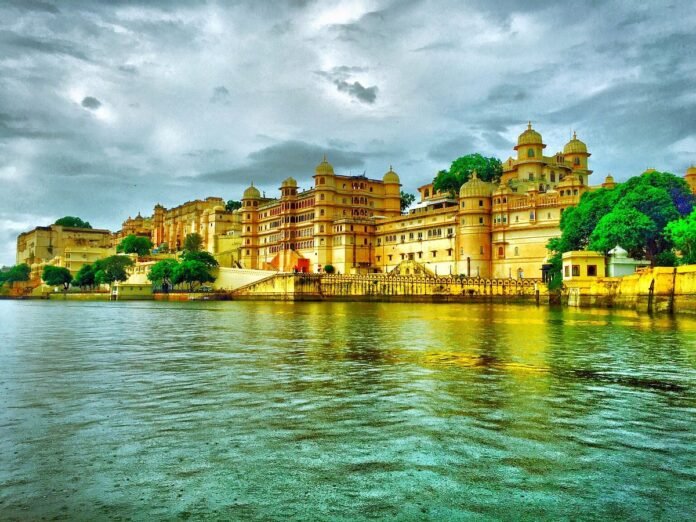Udaipur, often called the “Venice of the East,” transforms into an ethereal paradise during the monsoon season. As the first drops of rain touch the earth, the city’s picturesque lakes and rolling Aravalli Hills come alive with lush greenery, misty landscapes, and a refreshing ambiance. Whether you’re a nature lover, a history enthusiast, or someone looking for a tranquil escape, Udaipur’s monsoon charm is unmatched. The breathtaking views, serene boat rides, and vibrant cultural experiences make it a must-visit destination in the rainy season. If you’re planning a trip, finding a comfortable stay is crucial. For a cozy and affordable Budget Hotel in Udaipur, Rawla Sarkar offers an excellent option with warm hospitality and mesmerizing views.
The Magical Transformation of Udaipur in Monsoon
Unlike many destinations where rain dampens travel plans, Udaipur thrives under the monsoon spell. The otherwise dry and rugged Aravalli Hills turn into verdant landscapes, while the iconic lakes brim with fresh rainwater, enhancing the city’s scenic beauty. Imagine waking up to the sound of raindrops gently hitting the lake’s surface, with a cool breeze carrying the earthy fragrance of wet soil—this is the essence of monsoon in Udaipur.
The Lakes: A Mesmerizing Sight to Behold
Udaipur is home to some of India’s most stunning lakes, which appear even more enchanting during the monsoons.
Lake Pichola: A Romantic Retreat
One of the most famous lakes in Udaipur, Lake Pichola, looks surreal during the rains. The shimmering water reflects the majestic City Palace and the iconic Taj Lake Palace, creating an otherworldly scene. A boat ride here is a must, especially in the evening when the city lights dance on the lake’s surface. The added mist and cool weather make it an experience to cherish.
Fateh Sagar Lake: A Rainy-Day Delight
Fateh Sagar Lake, another gem of Udaipur, becomes even more mesmerizing when the monsoon clouds hover over the hills surrounding it. The lake’s three islands, including Nehru Park, provide a peaceful escape where you can enjoy panoramic views. Sitting by the lake with a hot cup of masala chai while raindrops ripple the water is one of the simplest yet most soul-soothing experiences.
Badi Lake: A Hidden Jewel
For those who love offbeat locations, Badi Lake is an underrated beauty. Monsoons turn this place into an untouched paradise, with misty hills embracing the lake from all sides. Less crowded than other lakes, it’s perfect for those seeking solitude amidst nature.
The Aravalli Hills: A Monsoon Wonderland
The Aravalli Range, which forms the backdrop of Udaipur, takes on a mesmerizing charm during the rainy season. The dusty brown hills get a green makeover, making them an ideal spot for hiking, sightseeing, and photography.
Sajjangarh (Monsoon Palace): A View Like No Other
Perched on a hilltop, Sajjangarh, popularly known as the Monsoon Palace, was built by Maharana Sajjan Singh to watch the monsoon clouds roll in over Udaipur. The view from here is nothing short of magical, especially during the rains when the entire city is enveloped in mist. The distant lakes, the undulating Aravalli Hills, and the cool monsoon breeze make it an unforgettable experience.
Bahubali Hills: The Best Monsoon Trek
If you’re looking for an adventurous monsoon trek, Bahubali Hills is the perfect spot. Located near Badi Lake, this short hike offers one of the most breathtaking panoramic views of the surrounding lakes and hills. The post-rain freshness in the air, combined with the lush greenery, makes this trek a favorite among nature lovers and photographers.
Kumbhalgarh: The Great Wall of India in the Rain
A little outside Udaipur, the majestic Kumbhalgarh Fort, with its 36-km-long wall (second only to the Great Wall of China), looks even more imposing against the rain-washed landscape. The mist swirling around the fort adds an element of mystery, making it one of the best monsoon getaways near Udaipur.
Savor the Monsoon Flavors of Udaipur
No monsoon experience is complete without indulging in local culinary delights. The rainy season in Udaipur calls for piping hot delicacies that enhance the cozy vibe.
Enjoy Traditional Rajasthani Cuisine
Dishes like Dal Baati Churma, Gatte ki Sabzi, and Mirchi Bada taste even better when enjoyed during a downpour. The comforting flavors of these authentic Rajasthani dishes make them a must-try.
A Rooftop Dining Experience Like No Other
If you want to enjoy monsoon showers while relishing delicious vegetarian food, head to a Veg Restaurant in Udaipur. The breathtaking views of the city drenched in rain, paired with mouthwatering cuisine, create an unforgettable dining experience. From Rajasthani thalis to global favorites, there’s something for every palate.
Why Monsoon is the Best Time to Visit Udaipur
- Pleasant Weather: Unlike the scorching summers, monsoons bring cool, breezy weather, making sightseeing more enjoyable.
- Lush Green Landscapes: The hills, parks, and gardens turn vibrant, making Udaipur a photographer’s paradise.
- Lesser Crowds: Compared to the peak tourist seasons, monsoon sees fewer travelers, allowing you to explore the city peacefully.
- Budget-Friendly Travel: With fewer tourists, hotels and travel costs are generally lower, making it an ideal time for budget travelers.
Final Thoughts
Udaipur during the monsoon season is nothing short of magical. The combination of shimmering lakes, lush green hills, and misty palaces makes it one of India’s most romantic and picturesque destinations. Whether you’re taking a boat ride on Lake Pichola, trekking the Bahubali Hills, or simply sipping tea at a lakeside café, every moment in Udaipur’s monsoon is an experience to cherish. If you’re planning a visit, embrace the season’s beauty and let Udaipur’s charm leave you spellbound.



